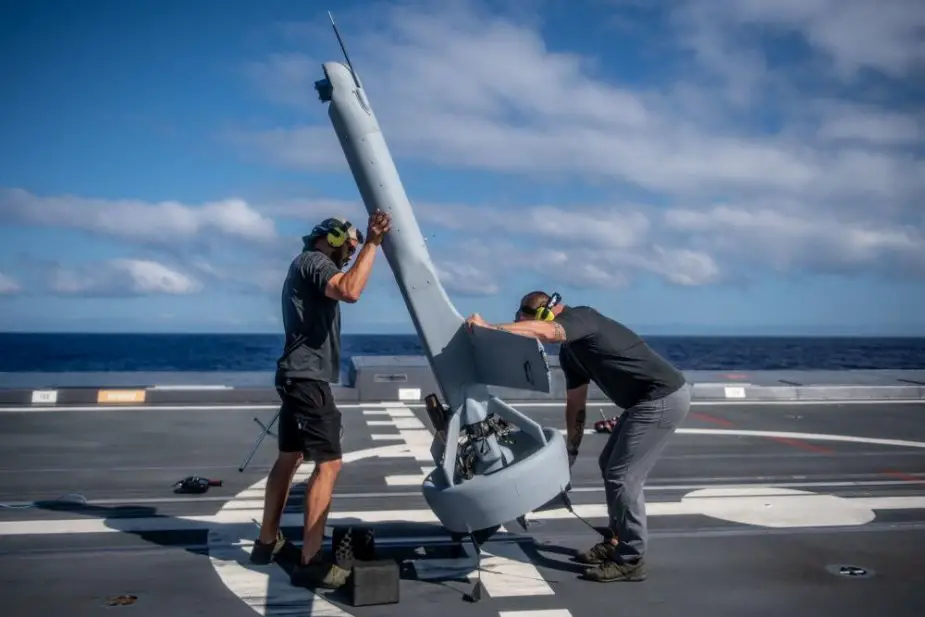Breaking news
US Navy tests V-BAT 118 UAS on the destroyer USS Michael Monsoor.
According to information published by the U.S. DoD on July 14, 2022, U.S. contractors with Shield AI conduct a test flight of a V-BAT 118 unmanned aerial system aboard the Zumwalt-class destroyer USS Michael Monsoor (DDG 1001).
Follow Navy Recognition on Google News at this link
 V-BAT 118 UAS on the Zumwalt class destroyer USS Michael Monsoor (Picture source: U.S. DoD)
V-BAT 118 UAS on the Zumwalt class destroyer USS Michael Monsoor (Picture source: U.S. DoD)
The V-BAT 128 VTOL drone can be used in defense and commercial applications such as search and rescue (SAR), border security, rapid tactical deployment, firefighting and disaster management, transportation, logistic resupply, infrastructure protection, and security and energy and oil and gas operations.
Design and features of V-BAT 128 UAS
The V-BAT 128 features VTOL capabilities and a small footprint, which allow for easy launch, transport, and operation. The drone has a length of 2.74m and a wingspan of 2.95m. It weighs 56.6kg, including fuel and payload. The aircraft’s assembly can be performed in less than 30 minutes by two personnel and the system can be transported and deployed by a minivan, light tactical vehicle or a helicopter such as Black Hawk.
The UAS features a single-engine ducted fan propulsion design, which eliminates the need for launch and recovery support equipment as well as exposed rotors that are commonly found in propeller-driven VTOLs.
V-BAT 128 unmanned aircraft’s launch and recovery
The unmanned aerial vehicle can switch from take-off mode to vertical hover and horizontal modes during flight. It also offers persistent stare capability throughout a given mission set while maintaining a sensor line of sight. It can perform take-off and landing operations on both static and moving platforms in very small spaces on land with less than a 3.6mx3.6m footprint in any environment.
The V-BAT 128 UAS can operate in fully autonomous mode from launch to recovery by using automated pre-programmed flight paths while providing increased operational safety.
Payload
The V-BAT design allows users to integrate different types of interchangeable and customizable payloads and sensors based on mission needs. With a payload capacity of 11.3kg, the V-BAT 128 unmanned aircraft can be equipped with electro-optical (EO)/mid-wave infrared (MWIR) cameras to provide long-range imaging abilities, image stabilization, and high-speed thermal imaging. The UAS transmits real-time video and imagery to its control station via a data link.
The VTOL aircraft also features an automatic identification system (AIS) as an aid for navigation and collision avoidance as well as land/maritime wide-area search (WAS) AI-based capabilities.
Propulsion and performance
The V-BAT 128 is driven by a more powerful, horizontal opposed, two-cycle, two-cylinder Suter TOA 288 engine, which can generate higher thrust than its predecessor. It can operate at speeds over 90k and withstand temperatures ranging between -40°C and +50°C. It has a service ceiling of 6.09m and can fly for 11 hours in horizontal flight.


























